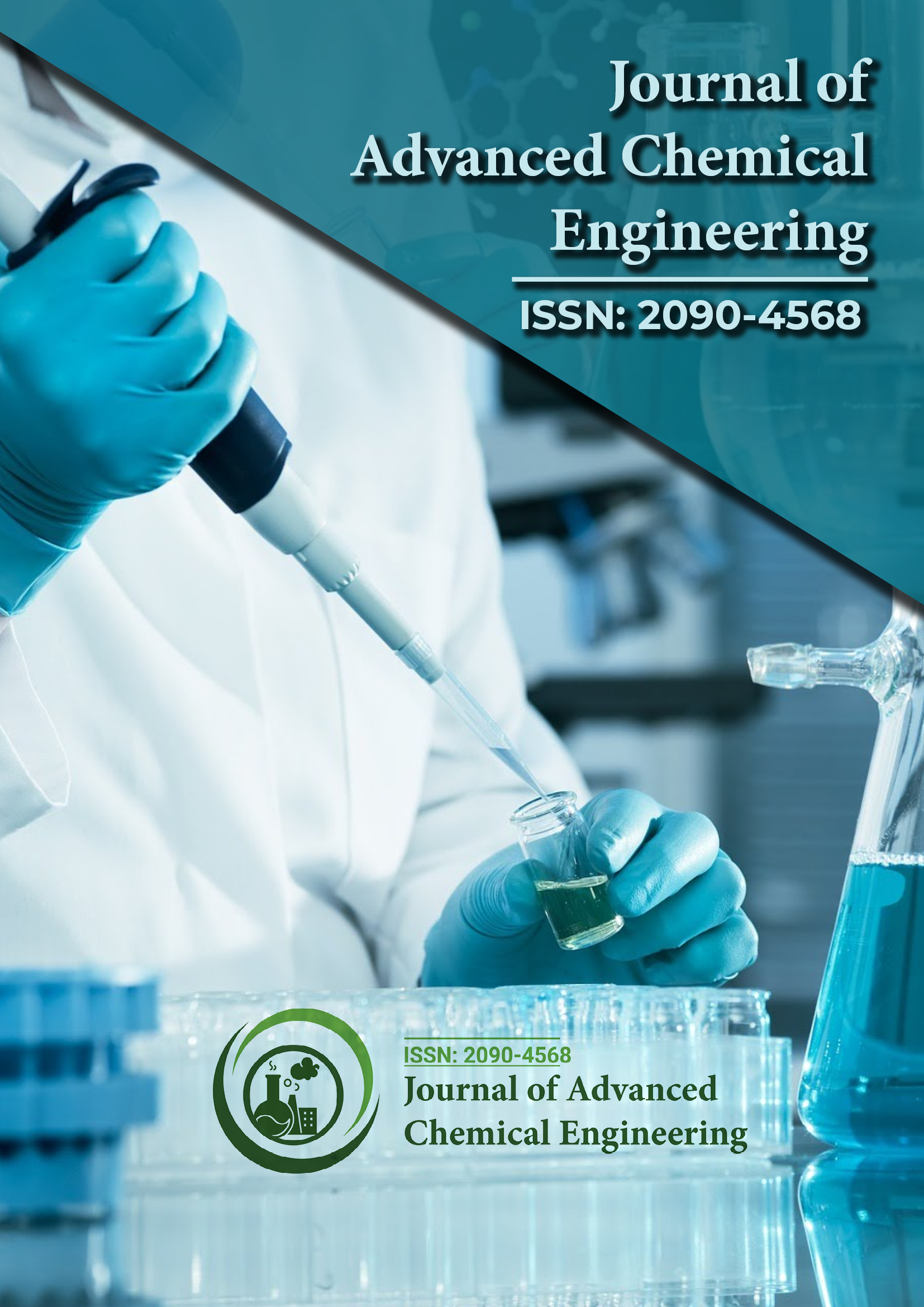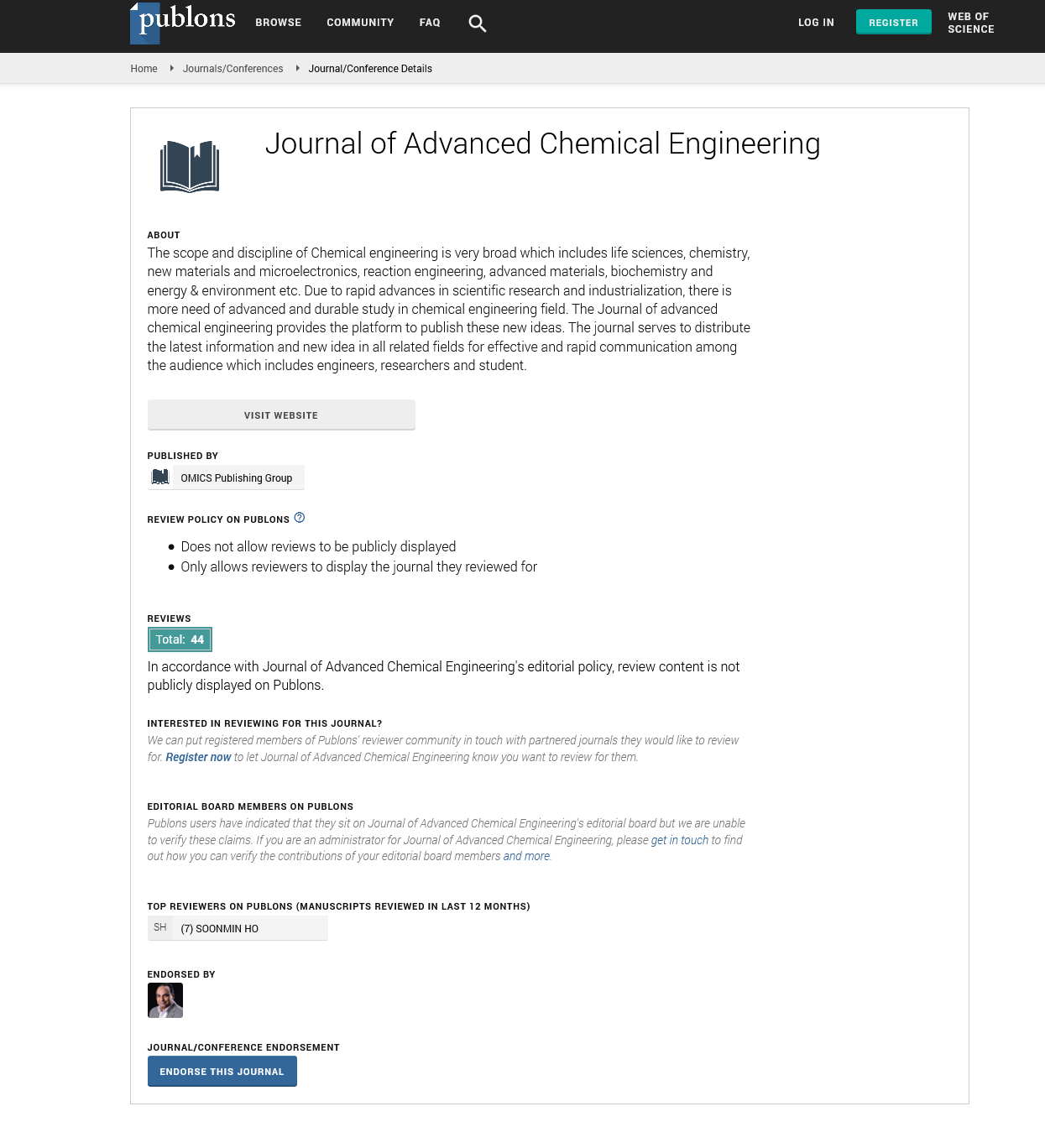Indexed In
- Open J Gate
- Genamics JournalSeek
- Smithers Rapra
- RefSeek
- Directory of Research Journal Indexing (DRJI)
- Hamdard University
- EBSCO A-Z
- OCLC- WorldCat
- Scholarsteer
- Publons
- Geneva Foundation for Medical Education and Research
- Google Scholar
Useful Links
Share This Page
Journal Flyer

Open Access Journals
- Agri and Aquaculture
- Biochemistry
- Bioinformatics & Systems Biology
- Business & Management
- Chemistry
- Clinical Sciences
- Engineering
- Food & Nutrition
- General Science
- Genetics & Molecular Biology
- Immunology & Microbiology
- Medical Sciences
- Neuroscience & Psychology
- Nursing & Health Care
- Pharmaceutical Sciences
Opinion Article - (2025) Volume 15, Issue 2
Artificial Intelligence in Chemical Engineering: Transforming Processes and Innovation
Elena Vasquez*Received: 30-May-2025, Manuscript No. ACE-25-29809; Editor assigned: 02-Jun-2025, Pre QC No. ACE-25-29809 (PQ); Reviewed: 16-Jun-2025, QC No. ACE-25-29809; Revised: 23-Jun-2025, Manuscript No. ACE-25-29809 (R); Published: 30-Jun-2025, DOI: 10.35248/2090-4568.25.15.370
Description
Artificial Intelligence has emerged as one of the most influential tools of the twenty-first century, reshaping industries in ways that were once unimaginable. Within chemical engineering, the application of AI has become a catalyst for transformation, revolutionizing everything from molecular design to large-scale manufacturing optimization. The integration of machine learning algorithms, predictive models, and advanced data analytics has provided chemical engineers with the ability to handle complex problems, reduce inefficiencies, and explore innovations that align with the goals of sustainability and economic viability. What makes this transition especially fascinating is the fusion of traditional engineering practices with modern computational intelligence, forming a hybrid landscape where humans and machines collaborate to enable smarter decision-making.
Chemical engineering has always been a discipline that deals with vast amounts of data, whether it involves reaction kinetics, thermodynamics, process simulations, or scale-up challenges. Before the advent of artificial intelligence, much of this data required manual interpretation or relied on mathematical models that were often limited in their ability to account for real-world variability. With the rise of AI, engineers now have the tools to mine vast datasets for patterns, predict system behavior under different conditions, and make adjustments in real time. This has profound implications not only for efficiency but also for safety, as predictive algorithms can identify potential hazards before they materialize, allowing for pre-emptive actions that save lives and resources.
One of the most prominent applications of AI in chemical engineering is in process optimization. Traditional optimization methods often rely on trial-and-error experiments, which can be costly and time-consuming. AI-driven algorithms, particularly those based on reinforcement learning and neural networks, can rapidly analyze multiple variables and determine optimal operating conditions. For instance, refining processes, polymer production, and wastewater treatment plants have all benefited from AI models that continuously monitor inputs and outputs, making fine-tuned adjustments that maximize yield while minimizing waste and energy consumption. These improvements align with the global movement toward greener and more sustainable chemical practices.
AI is also making remarkable strides in molecular discovery and materials engineering. Machine learning algorithms can screen millions of molecular structures in silico, predicting properties such as solubility, toxicity, or catalytic activity before a single experiment is conducted in the lab. This accelerates the pace of discovery, reducing the years it might traditionally take to design new catalysts, polymers, or drugs. For chemical engineers, this means that entire new classes of materials can be explored more efficiently, opening the door to innovations in energy storage, carbon capture, and biomedical applications. The predictive capabilities of AI, when combined with high-throughput experimentation, represent a new paradigm in how we approach the development of advanced materials.
Another critical area where AI is exerting influence is safety and risk management. Chemical plants are inherently complex and, in many cases, hazardous environments. AI systems equipped with anomaly detection capabilities can monitor thousands of sensors simultaneously, identifying irregular patterns that may suggest equipment failure, leaks, or unsafe reaction conditions. Early detection and intervention prevent catastrophic failures, protecting both workers and the environment. Beyond plant safety, AI models are also being used to simulate emergency scenarios, enabling engineers to design more robust contingency plans and enhance training for personnel.
Education and workforce development are also undergoing transformation due to AI. The skills required of chemical engineers today go beyond classical chemical principles; they must now understand coding, data analytics, and AI integration. Universities across the globe are embedding AI coursework into chemical engineering curricula, ensuring that the next generation of engineers can thrive in this new landscape. While some fear that AI may replace jobs, in reality, it is creating new roles centered on the integration and oversight of intelligent systems. The partnership between human expertise and machine efficiency is proving to be more powerful than either entity working alone.
Citation: Vasquez E (2025). Artificial Intelligence in Chemical Engineering: Transforming Processes and Innovation. Adv Chem Eng. 15:370.
Copyright: © 2025 Vasquez E. This is an open-access article distributed under the terms of the Creative Commons Attribution License, which permits unrestricted use, distribution, and reproduction in any medium, provided the original author and source are credited.

